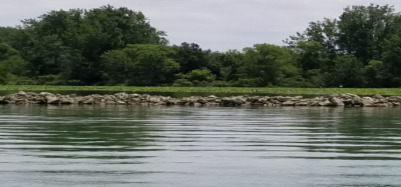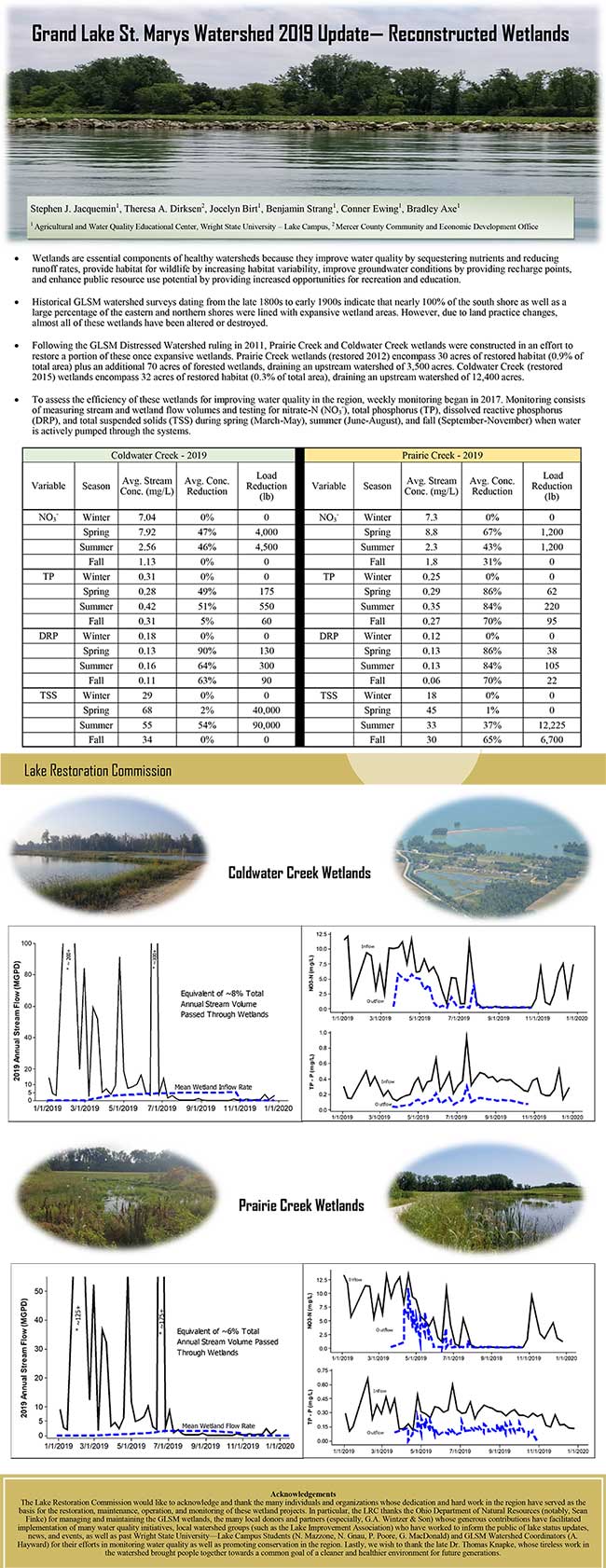
Wright State University’s Dr. Stephen Jacquemin and Ag Solutions’ Theresa Dirksen recently gave an update on wetlands monitoring at the February 2020 Lake Improvement Association member meeting. View the report below.
SUMMARY
Wetlands are essential components of healthy watersheds because they improve water quality by sequestering nutrients and reducing runoff rates, provide habitat for wildlife by increasing habitat variability, improve groundwater conditions by providing recharge points, and enhance public resource use potential by providing increased opportunities for recreation and education.
- Historical GLSM watershed surveys dating from the late 1800s to early 1900s indicate that nearly 100% of the south shore as well as a large percentage of the eastern and northern shores were lined with expansive wetland areas. However, due to land practice changes, almost all of these wetlands have been altered or destroyed.
- Following the GLSM Distressed Watershed ruling in 2011, Prairie Creek and Coldwater Creek wetlands were constructed in an effort to restore a portion of these once expansive wetlands. Prairie Creek wetlands (restored 2012) encompass 30 acres of restored habitat (0.9% of total area) plus an additional 70 acres of forested wetlands, draining an upstream watershed of 3,500 acres. Coldwater Creek (restored 2015) wetlands encompass 32 acres of restored habitat (0.3% of total area), draining an upstream watershed of 12,400 acres.
- To assess the efficiency of these wetlands for improving water quality in the region, weekly monitoring began in 2017. Monitoring consists of measuring stream and wetland flow volumes and testing for nitrate-N (NO3-), total phosphorus (TP), dissolved reactive phosphorus (DRP), and total suspended solids (TSS) during spring (March-May), summer (June-August), and fall (September-November) when water is actively pumped through the systems.

